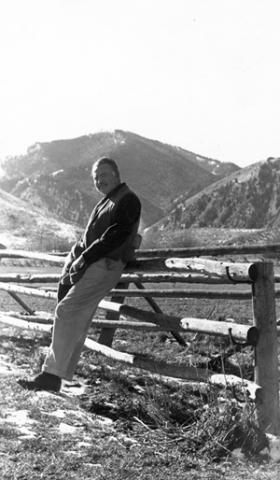Soon after Hemingway's suicide in 1961, the Cuban government told Mary Hemingway they were making a museum of the Finca Vigia, the Hemingways' Cuban home. The Hemingways had not lived in Cuba since the late fifties, and the Finca and its furnishings, the Pilar, and a Havana bank vault full of Hemingway's manuscripts remained in Cuba. Relations between Cuba and the United States were very tense--this was just after the Bay of Pigs--and U.S. citizens could not travel to Cuba. William Walton, a journalist and artist and Mary's friend from World War II, asked his friend President John F. Kennedy for help in getting Mary to Cuba. Within a few hours all was arranged.
As Mary recalled in an interview in the Hemingway Collection and in How It Was, Hemingway "never discarded anything but magazine wrappers and three-year-old newspapers, [and] had managed to stuff to its brim almost every drawer of the Finca." Mary and her crew sorted the important items from the junk, burning the latter in a bonfire below the tennis courts. Fidel Castro visited and then permitted Mary to put her boxes of papers and paintings on a shrimp boat bound for Tampa. Everything else is still in the Finca Museum.
In 1935 Hemingway had left papers in the storeroom behind Sloppy Joe's Bar in Key West, Florida. Conditions were less than ideal, and when Mary went to investigate in 1962, she found rat skeletons among the papers. A third source of the Hemingway Collection came from a 1956 visit to Paris, where the Hemingways retrieved papers Ernest had left at the Ritz Hotel.
Mary then looked for a home for the collection. In the early fifties, Hemingway said he might give his papers to the New York Public Library, but space there was limited. Mary wanted the various drafts--many written in Hemingway's "big sprawling hand"-- available so people could see the writing process from initial idea "to the point where it is finally published the way the author thinks is the best." And she wanted to give the collection "to some place where [Hemingway] would be to himself and have a little personal distinction." Their animal trophies would give some feeling of Hemingway, and she hoped there would be room for the lion she shot during their 1953 "wacky safari in East Africa." Hemingway called it "Miss Mary's Lion" (Sports Illustrated, 1972).
In 1964 Mary met Jacqueline Kennedy's secretary at a party and, just by chance, offered the collection to the Kennedy Library. She then went fishing in the Cayman Islands while the library's representatives tried unsuccessfully to reach her. The donation was settled in 1968, and four years later Hemingway materials began arriving at the library in Bonwit Teller shopping bags, cardboard boxes, and dented trunks with French and Cuban labels. The Hemingway papers were first opened for research at the library's temporary facility in 1975.
In 1980 Patrick Hemingway and Jacqueline Kennedy Onassis dedicated the Hemingway Room in the newly opened Kennedy Library at Columbia Point, Boston. Hemingway's antelope head from the 1933 safari hangs over the fireplace, and Mary's lion is on the floor. Photographs of three generations of Hemingways line one wall. Large desks and comfortable chairs welcome Hemingway fans and students of all ages. They come to see the papers and mementoes of a writer, a celebrity, a story- teller-manuscripts and letters, scrapbooks, hunting and fishing logs, paintings by Andre Masson, trunks and footlockers stenciled HEMINGWAY, carved African statues, and Cuban street scenes by Bill Walton.
This article originally appeared in the Winter 1992 issue of Prologue: Journal of the National Archives.
